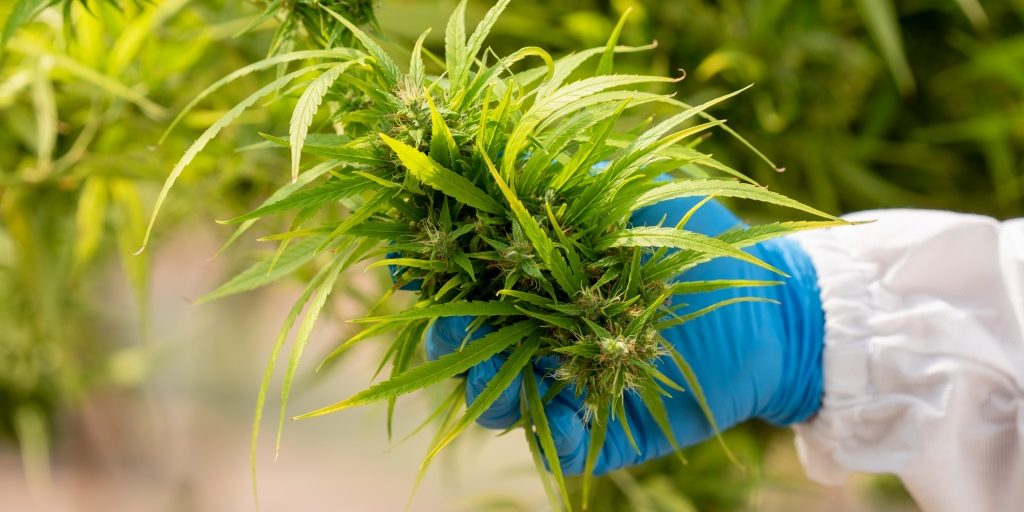Q: What are terpenes, and do they have medicinal benefits?
A: Terpenes are the essential oils produced in many different types of plants including cannabis. They are found in the flowers, fruits, leaves, and sap of plants. They are called aromatic compounds because of their chemical formulas which are responsible for the aroma and fragrance of the plant. Plants produce these chemicals for various purposes including defense against being eaten by predators, attracting insect and bird pollinators, resisting certain diseases, and even plant-to-plant communication.
For centuries, man has used plants as medicine. Aside from the therapeutic value of cannabis, terpenes have their own medicinal value and are believed to heighten or modulate the effects of cannabis contributing to the entourage effect, which is a synergistic effect contributed by all the chemical compounds in cannabis. Just like cannabis, they affect many overlapping redundant physiological functions. They can fight pain and inflammation which can be the root cause of many illnesses. Some can lower anxiety and some even have antifungal and antibacterial properties. They can interact with neurotransmitters and chemicals in our brains just like cannabis. And they may also interact with cannabinoid receptors too.
The chemical composition and formula of a terpene is made up of carbon and hydrogen atoms in a building block unit called an isoprene unit. Myrcene is a simple terpene, made up of two isoprene units bound together. And some terpenes, like limonene, have a ring structure attached.
Many terpenes have analgesic and pain-relieving effects of their own. For example, myrcene is one of the most prevalent terpenes found in cannabis, but it is also found in hops, lemongrass and cardamom. It gives cannabis a musky, earthy aroma. Its action has been found to be blocked by the anti-opioid drug naloxone suggesting it has a similar mechanism of action as opioids. Additionally, it activates other pain-relieving receptors in the brain called TRPV1 receptors.
Beta-caryophyllene is another very commonly found terpene in cannabis and also in black pepper. It gives off that spicy peppery taste. It was the first non-cannabinoid compound found to interact with cannabinoid receptors. A mouse model of neuropathic pain found that activation of these cannabinoid receptors leads to its anti-inflammatory and pain-relieving effects.
Linalool, another terpene found in cannabis but also in mint and lavender, is thought to contribute to the spicy floral aroma of cannabis. In human studies, inhalation or aromatherapy with lavender was found to decrease post-operative pain and morphine use after surgery. Other studies find it can decrease the activity in the cells of the spinal cord that transmit pain.
Limonene, another terpene that is also found in citrus rinds and gives cannabis a fruity aroma and flavor, reduced sensitivity to muscle and bone pain in animal studies.
Many of the terpenes above that help reduce pain also have anti-inflammatory effects. Alpha and beta-pinene are terpenes also found in frankincense, a resin from the African Boswellia trees. Animal models show it decreases inflammation via inhibition of the COX-enzymes, which is the same mechanism of action that non-steroidal anti-inflammatory medications (NSAIDs) such as ibuprofen and naproxen use.
For stress and anxiety, many terpenes have been found to be mood stabilizers. Beta-caryophyllene has anti-anxiety and anti-depressant activity that may be mediated by increasing serotonin levels (5HT1A) the way prescription medications, like Selective Serotonin Reuptake Inhibitors (SSRI) work. And Linalool has been found to have antidepressant activity.
There is even some anti-seizure activity seen in the terpene linalool. It was found to block a receptor for a brain chemical called glutamate that is elevated in seizure disorders. Studies found that cannabis chemovars with linalool had anti-seizure effects.
Sleep is another reason that people turn to cannabis and chemovars with certain terpenes can help augment that. Myrcene is known to have sedative effects. And, in an animal study done on mice, Linalool was also found to have sedating effects when inhaled.
Preclinical research done in hypertensive rats found that limonene could slow cognitive decline and improve function after stroke.
However, it’s important to remember that much of this research is preclinical and done with animal models. Additionally, not all animal research translates to humans. As always, it’s important to talk with your physician about your cannabis therapy. But since many medical cannabis laws in most states do require certificates of analysis that list not only all the cannabinoids in their products but also the terpene content, it might be beneficial to look for cannabis chemovars that also have terpenoid profiles that can add to the desired therapeutic effect you need.
Dr. Leigh Vinocur is a board-certified emergency physician who also has a cannabis consulting practice for patients and industry. She is a member of the Society of Cannabis Clinicians and a graduate of the inaugural class, with the first Master of Science in the country in Medical Cannabis Science and Therapeutics from the University of Maryland School of Pharmacy.
Originally published on greenstate.com on February 13, 2023.







